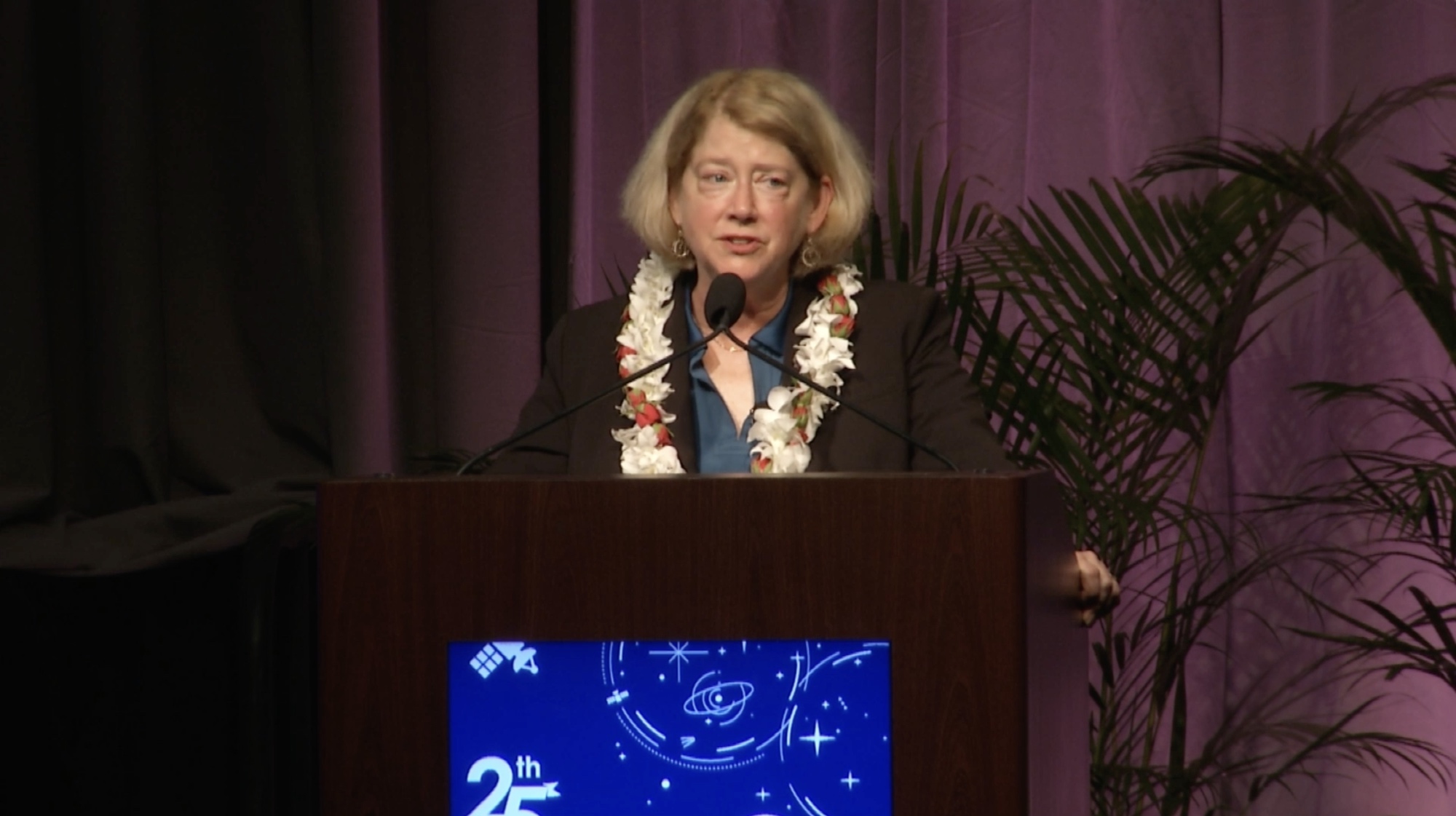PARIS — NASA has established a space sustainability division that will consolidate much of the work the agency is doing on orbital debris and related issues.
Speaking at the Advanced Maui Optical and Space Surveillance Technologies (AMOS) Conference Sept. 19, NASA Deputy Administrator Pam Melroy said the agency received the required approvals from congressional appropriations committees the previous day for the reorganization required to create the division.
The division will be a “unified organization that will integrate our operational, research and policy functions,” she said. Those functions had been spread out among several offices spread out among different NASA mission directorates and centers.
She noted eight different entities within NASA have some role in orbital debris, including the Orbital Debris Program Office, Meteoroid Environments Office and Conjunction Assessment Risk Analysis program. Other parts of NASA’s science and space technology directorates also play roles in space sustainability, along with offices involved in policy.
“We can’t move every organization under this one umbrella,” she said, such as the trajectory operations officer, or TOPO, at the Johnson Space Center, who has responsibilities beyond orbital debris conjunction assessments for the International Space Station. “But what we can do is move the organizations that can be moved together and then take action going forward to have a coordination function.”
The Space Sustainability Division will be part of the Space Operations Mission Directorate, which includes the ISS. “If you have an operational mission, having it under operational control is really helpful,” she said. “That’s the day-to-day urgent mission. We’re keeping astronauts and our spacecraft safe.”
The division will be led by Alvin Drew, a former astronaut that the agency recently named the first director of space sustainability. NASA created that position as part of the space sustainability strategy it unveiled in April. That strategy also included the creation by the agency of “an empowered organizational entity to focus on day-to-day coordination and accountability of NASA’s space sustainability efforts.”
Melroy said the new division will have access to about $40 million “sprinkled across the agency” that she said should be better coordinated now. “It’s so important for us to be on the same page so that we can make effective use of that money.”
That includes tackling challenges in orbital debris research. The strategy calls for developing a framework for space sustainability as well as improved metrics and modeling to address “serious uncertainties” about debris models.
“I can tell you it has not escaped senior leaders’ notice that we don’t even have common numbers of debris posted on various websites for how much is out there,” she said, which she argued was one reason why there has been little progress on solutions to the debris problem. “There are sometimes orders of magnitude difference in how much orbital debris of what site exists out there. People notice that.”
“Don’t even get me started on how we can remediate debris when we can’t even track it,” she added.
She called on debris researchers to work on ways to reduce uncertainty in those models, saying it can lead to “more consensus around projects that we can do together” in the field. “You’ve got to tell this story better to leaders, and I’m here to help.”
Related
Read the original article here
